-
ENP 19.6 Yosemite: Things To Do By Season with Yosemite Conservancy and Yosemite Hospitality
11/18/2019
_yc-nancy-robbins.jpeg) Badger Pass Snowshoers
Badger Pass Snowshoers
Photo by Yosemite Conservancy/Nancy Robbins.jpg) Adonia Ripple, Yosemite Conservancy
Adonia Ripple, Yosemite ConservancyDescription
Danielle gets tips and recommendations for visiting Yosemite National Park in every season from Adonia Ripple from Yosemite Conservancy, the park’s official nonprofit partner and Lisa Cesaro from Yosemite Hospitality, the park’s concessionaire.
Philanthropy and public lands go back a long time. Yosemite Conservancy was the first organization rather than just individuals giving to public lands. The genesis of Yosemite Conservancy was in 1923. It is the park’s primary philanthropic partner, which provides both grants for projects and programs within the park as well as providing a number of visitor education and enrichment services. Funding and resources augment the National Park Service's goals of protecting this place and enhance the visitor experience. Projects include trail building and restoration, vegetation removal of non-native species, restoration of Cook’s Meadow, restoration of the Mariposa Grove, wildlife research, and youth programming that the Park Service implements. Yosemite welcomes more than 4 million visitors per year. As a partner organization, Yosemite Conservancy helps those visitors see how they can be stewards of the park.
About Yosemite Conservancy
Yosemite National Park is in the heart of California within the Sierra Nevada Mountains, which are 400 miles long, but not very wide. The park encompasses two major watersheds. The boundary was drawn to protect both the Tuolumne River watershed in the north and the Merced River watershed in the south.
About Yosemite
The park has a diversity of biomes and elevations so the boundary stretches from 2000 feet in elevation, which is the Sierra foothills. There you find Oak, Manzanita and grasslands. Elevations reach more than 13,000 feet where you find high Alpine environment, rock, and little vegetation. Visitors may experience a range of biomes or different life zones when traveling in Yosemite National Park. There is an elevation and a season any time of year that's worth visiting.
There are five entrances to the park. Four entrances are mostly around the northwest and south and one to the east.
Which Entrance to Yosemite Should I Take?- Arch Rock Entrance is accessible from highway 140 on the west side of the park. This entrance is open year-round.
- Big Oak Flat Entrance is accessible from the north on highway 120, for those coming from San Francisco and Northern California.
- The Hetch Hetchy Entrance is the northern-most entrance and is also accessed from highway 120.
- South Entrance is accessible from Highway 41 through the town of Fish Camp toward Mariposa Grove and Wawona for those traveling from San Diego and Los Angeles.
- Tioga Pass entrance on the east side is accessible from Leave Vining. This entrance closes in the winter. This entrance is really a summer access point. It makes a lovely travel through pass to come from from west to east or north to East especially in the summer months if you're planning on points beyond in the deserts of Nevada or Southern California.
Hetch Hetchy
Hetch Hetchy has a lot of wild land beyond the reservoir. It was a valley akin to Yosemite Valley that was dammed to provide water for the city of San Francisco. It looks very different than Yosemite Valley, but it is very worth seeing and for sparking a conversation with your family about where our water comes from.
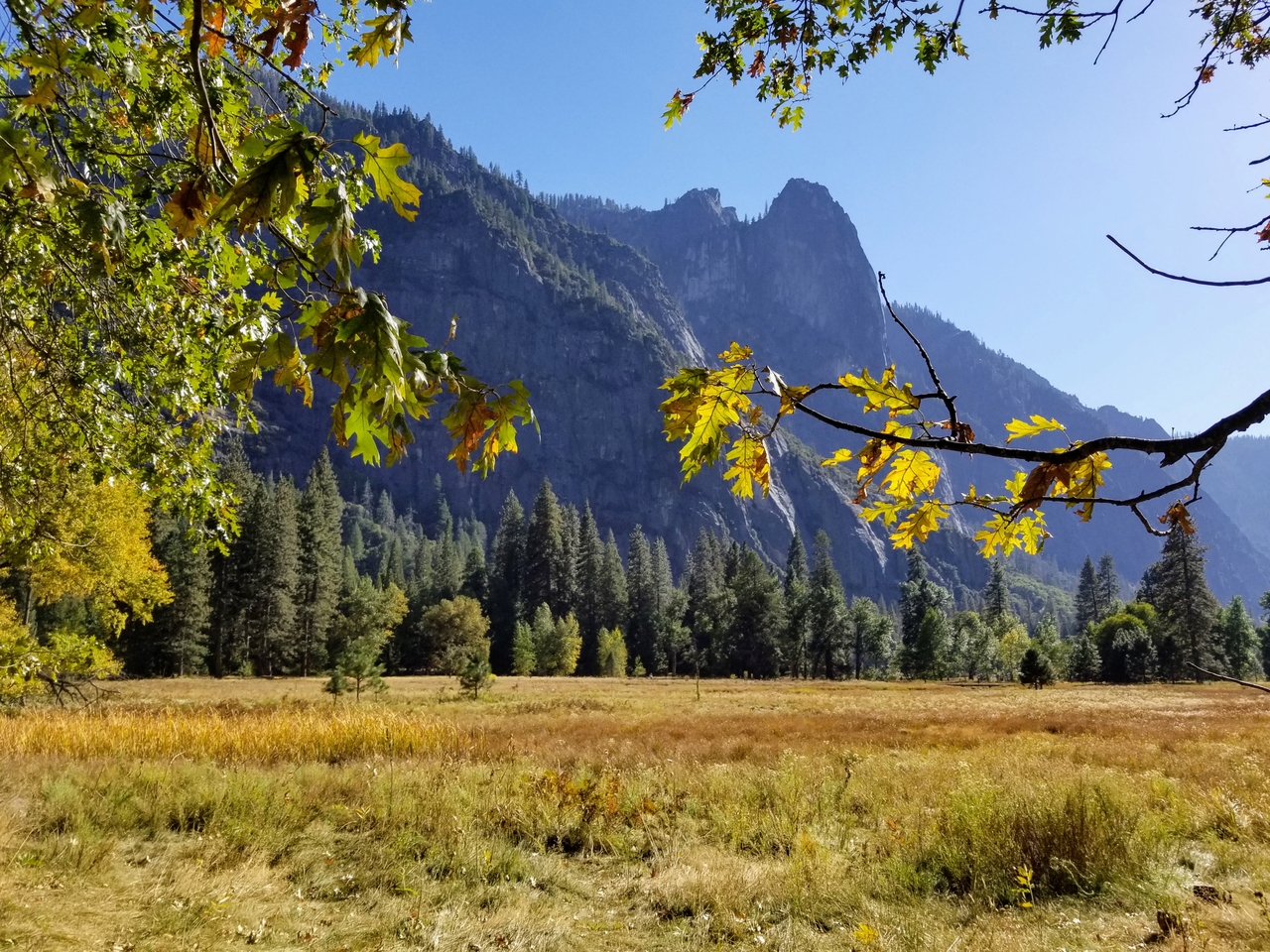 Sentinel Rock in Autumn
Sentinel Rock in Autumn
Photo by Yosemite Conservancy / Gretchen RoeckerHow much time to spend in Yosemite
This place deserves a lifetime of attention. Most families only have a weekend. Adonia discourages only coming for a day trip because it would be trying to pack too much with too much driving and too many potential traffic barriers to actually have an enjoyable time. Two or three nights would be the minimum for a family. If all you have is one night of course you should still come. Ideally, spend an entire week. There's plenty to do.
Getting accommodations within Yosemite proper is challenging and requires planning ahead approximately a year in advance. (Scroll down for accommodations inside the park.) There are wonderful gateway towns outside of all of the entrances that have great accommodations. You need to build in the travel time for getting into the park.
Where to Stay at Yosemite
Get your family up early and get into the park before 8:00 AM. If you're coming in the summer, you will have a vastly different experience than someone who arrives at 10 o'clock. You may even experience solitude and sanctuary at incredibly popular places. If you're willing to even enter the park at 6:00 or 7:00 AM in the summer, or stay late...bring your picnic dinner and don't rush out of the park in the evening. Watch the sunset from somewhere. You'll find it empties out at this pretty profound level even at 5:00 PM on a summer's night. Low and behold, it's you and your family, mostly alone in some totally incredible place.
Avoiding Crowds in Yosemite“Release time and start occupying those… sunrise and sunset hours, because you ...will find a certain spaciousness and freedom of movement that is pretty hard to find if you're traveling in the heart of summer.”
Parking
Once your car is parked, just leave it there. Walk on foot from where you are, take a shuttle bus, or rent bikes.
Your itinerary will depend on the capability of your group.
Suggested Itineraries by Season
Spring is all about the waterfalls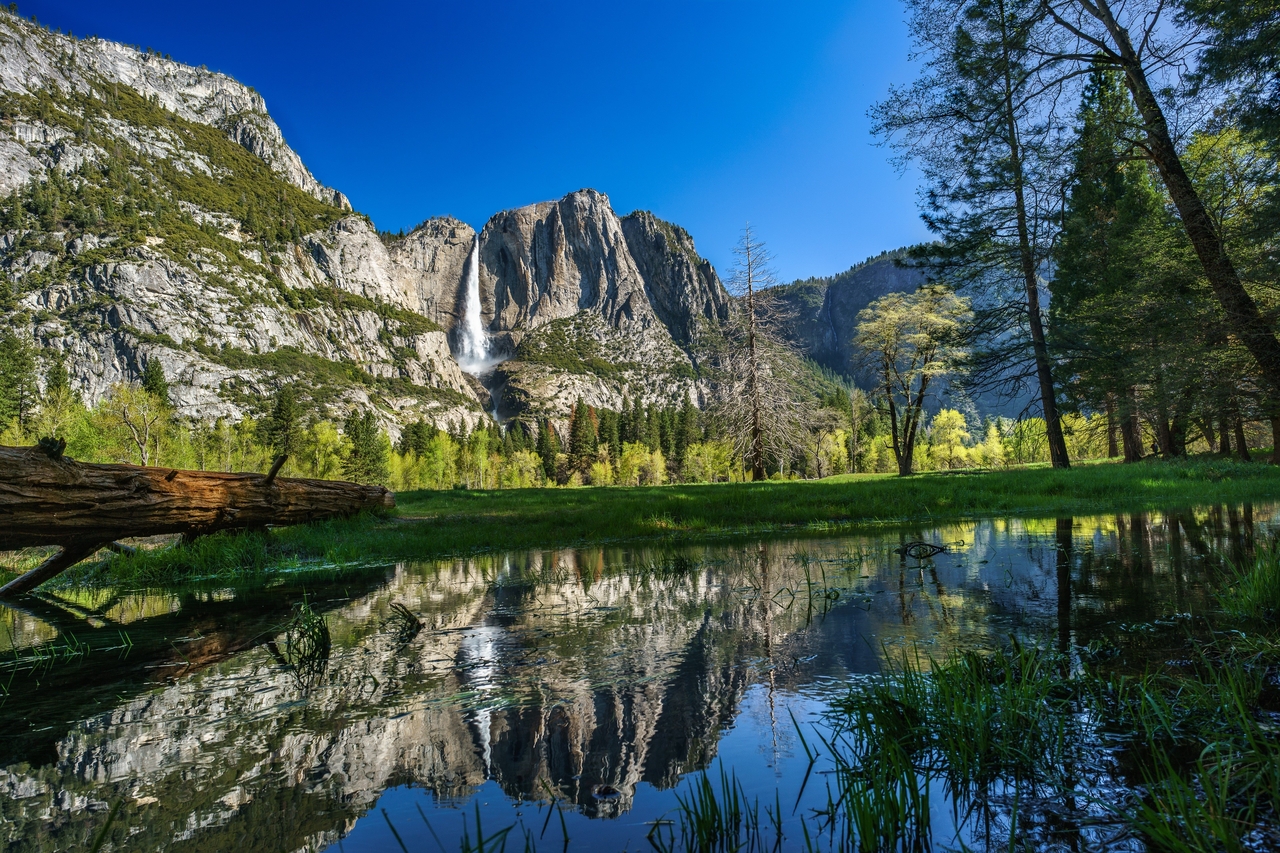 Yosemite Falls in Spring – photo by Pixabay
Yosemite Falls in Spring – photo by Pixabay
When people think of Yosemite Valley, a lot of the pictures they see are springtime from late April through Memorial Day. It is breathtaking. It's when the dogwoods are blooming. You have the sound of the water moving off the cliffs, magnificent world class tall waterfalls, the raging Merced River and green meadows.
Valley Loop Trail: If you're looking for more solitude away from the more popular waterfall trails, hike the west end to Yosemite Valley on the Valley Loop Trail. The trail runs on both sides of the river. Look at a map to see exactly where it is, but focusing on the west end of the valley is particularly wonderful, wild, and undeveloped. When you look on a map, it looks like the trail is along the road, but you really don't notice the road at all. It's very flat. So it makes for a nice, family oriented trail with gorgeous views of the Cathedral Rocks and El Capitan. If you park at either Bridal Veil Falls area, which is an amazing sight to see in the spring, or at El Capitan Meadow areas, you may access the Valley Loop Trail, which covers the entire Valley floor. In the springtime, the dogwoods create arches over the trail.
Mist trail: It is on the top of everyone's mind when thinking of Yosemite in springtime. This trail leaves from Happy Isles in the far east end of Yosemite Valley. It is the trail that travels alongside Vernal and Nevada Falls, which run year-round. It's that get drenched, total waterfall experience kind of hike. Even with small children, making it to the Vernal Falls Bridge is highly possible, to see the power of that much water moving that waterfall. There is a shuttle bus that comes close to the trailhead at Happy Isles (shuttle stop #16).
Happy Isles Art and Nature Center: Visit the Happy Isles Art and Nature Center for wonderful engaging family programming and exhibits.
Yosemite Falls: Lower Yosemite Falls has another bridge you can stand on and get totally soaked. You really understand how much water is falling off these cliffs and your family will experience what spring runoff means. Yosemite Falls does not run year-round. It is usually dried up by August. It's still a gorgeous cliff, but the prime time to see it is April into late June when it's most full and gorgeous.
- Tip: Balance the bustle of trying to see things with just enjoying the views. If you stand still pretty much anywhere in Yosemite Valley with a view, your life can be changed and you will have an amazing experience. Especially when traveling with families, allow time and space to just enjoy and not hustle to see everything. Give kids time to throw rocks in the water.
- Tip: Bring your picnic and snacks. In the valley, especially in high season, peak times for acquiring food and lunch can become a really congested experience. Bring the picnic so that you are not bound to having to find a store or an outlet to buy food. It's going to give you so much more freedom and reduce stress.
Summer is the prime time to be in the High Sierra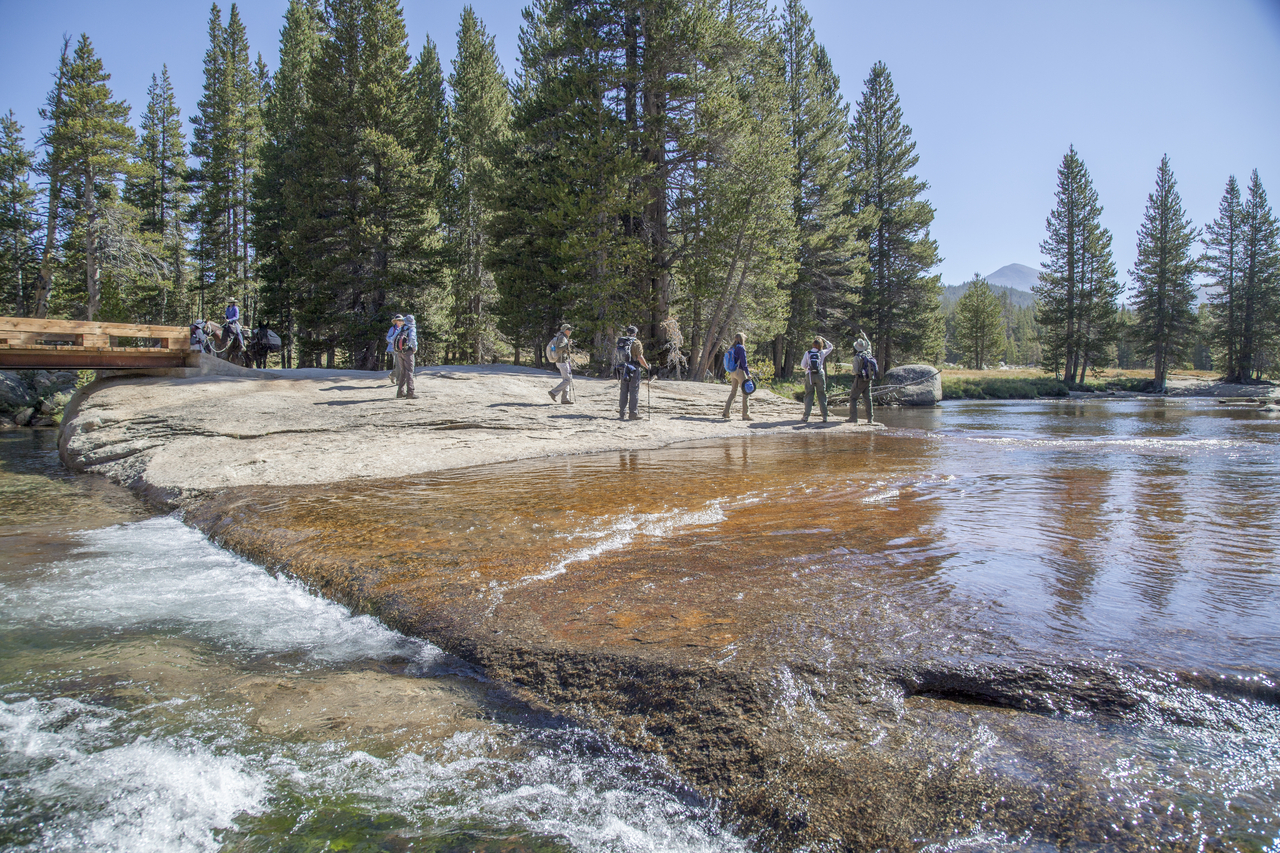 High Country Hikers
High Country Hikers
Photo by Yosemite Conservancy / Keith Walklet
Tuolumne Meadows: It begins at 9000 feet. It is a spectacular fairyland of alpine meadows, smooth granite domes and flowing rivers that are fun to explore in the snow free time of year with your family. The Tioga Road is open approximately late May or June through October or November and is a continuation of Highway 120 travelling east through the park.
Tenaya Lake: If you were to drive through Yosemite in the summer you drive through Tuolumne meadows, stopping at Tenaya Beach. It's a massive lake with huge domes all around it. That alone could be your day. You may bring your own watercraft with you such as paddleboards, kayaks or canoes.
Pothole Dome: If you travel further up the road, you enter what is considered Tuolumne Meadows proper with a number of domes emerging from the landscape. Pothole Dome is a fun little ramble to do with a family because it gets you onto that smooth granite and helps people understand what this place is built of - the granite. It offers a gorgeous view of the High Sierra. There are a number of wonderful hikes out of Tuolumne Meadows that you may find in any guidebook. Here are ones that are fun for people with younger children.
Gaylor Lake: It’s just 2 miles round-trip. It's steep, but gets you up into some lovely Alpine lakes near the Tioga Pass Entrance Station.
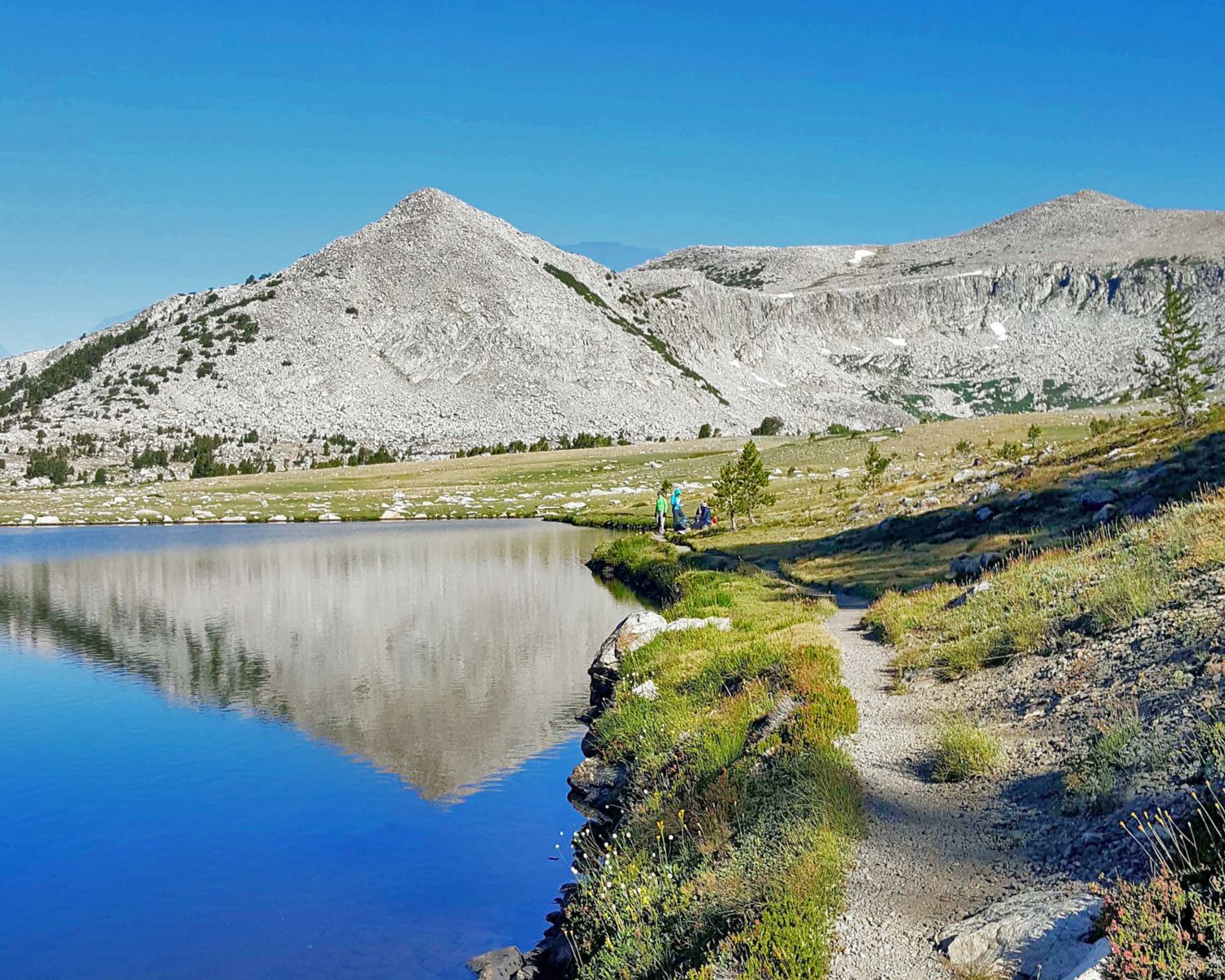 Gaylor Lakes
Gaylor Lakes
Photo by Yosemite Conservancy/Gretchen Roecker
Lyell Canyon: Then wander out to Lyle Canyon, which is this big old glaciated Canyon in Tuolomne meadows and has the beautiful Lyell Fork of the Tuolomne River. You could just wander for hours along the river looking at the high peaks all around you. That's a really fun day hike.
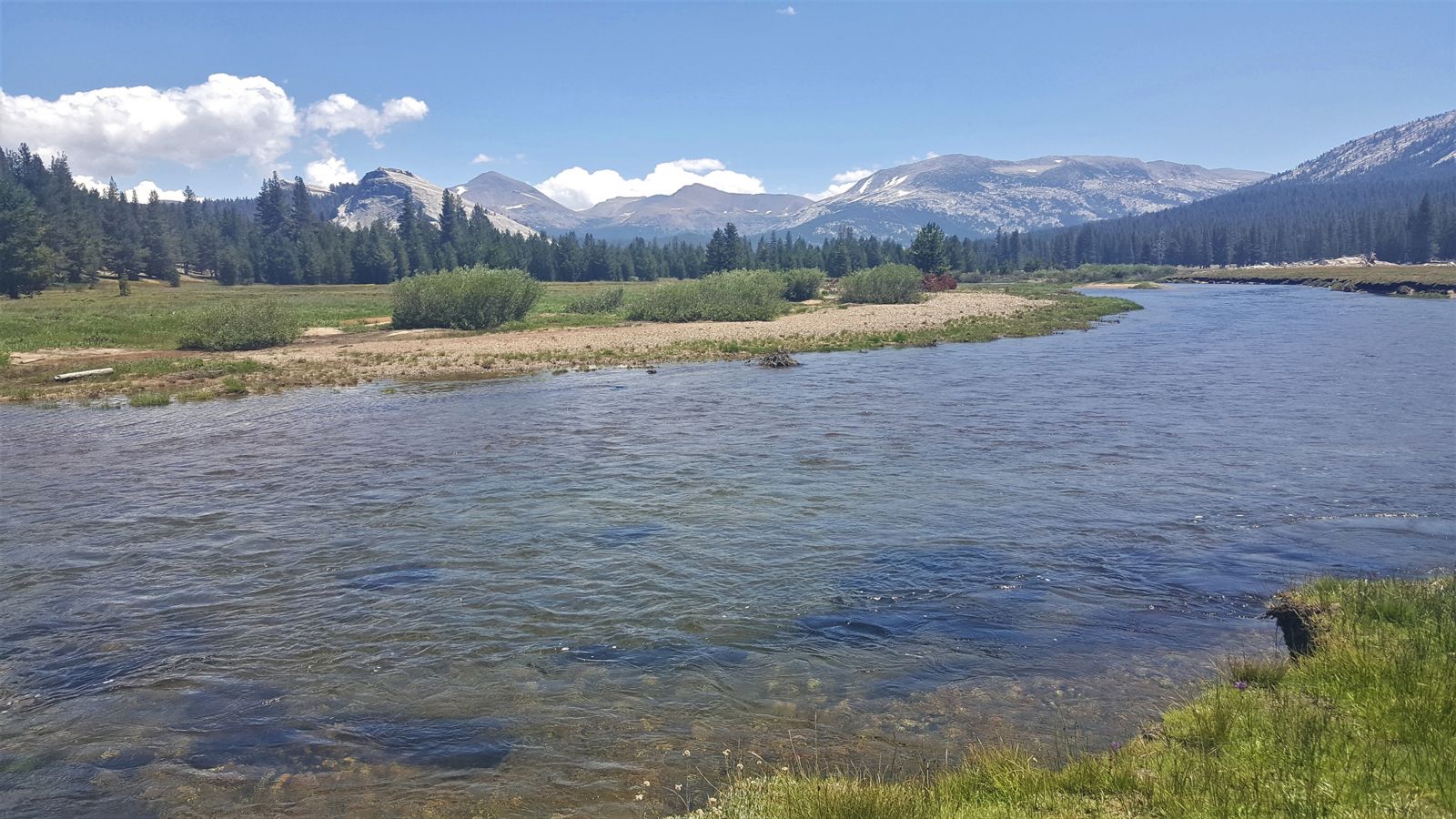 Tuolumne Meadows Beauty
Tuolumne Meadows Beauty
Photo by Yosemite Conservancy/Gretchen Roecker
Backpacking at Mount Lyell and Glaciers
In summer, the High Sierra trails are open and free of snow. It’s the time to get up high and move through the landscape that's not always accessible at other times of year. Above Lyell Canyon is Mount Lyell, the highest point in the park, There are glaciers on the side of the mountains. If you keep going it makes a wonderful backpack trip.
Lyell Glacier is no longer considered a glacier because it is not advancing or growing in any way. Mount Maclure, which is right next to Mount Lyell is still considered a proper glacier. Those are being reduced due to climate change, but it is a glacier-like basin. It's an endeavor to get there, 10 miles each way, but it's absolutely something if you want to see glaciers in Yosemite.
Sentinel Dome
To see what this place is all about, head to Sentinel dome on the Glacier Point Road. There is a walk that is only open in the summer months.
Fall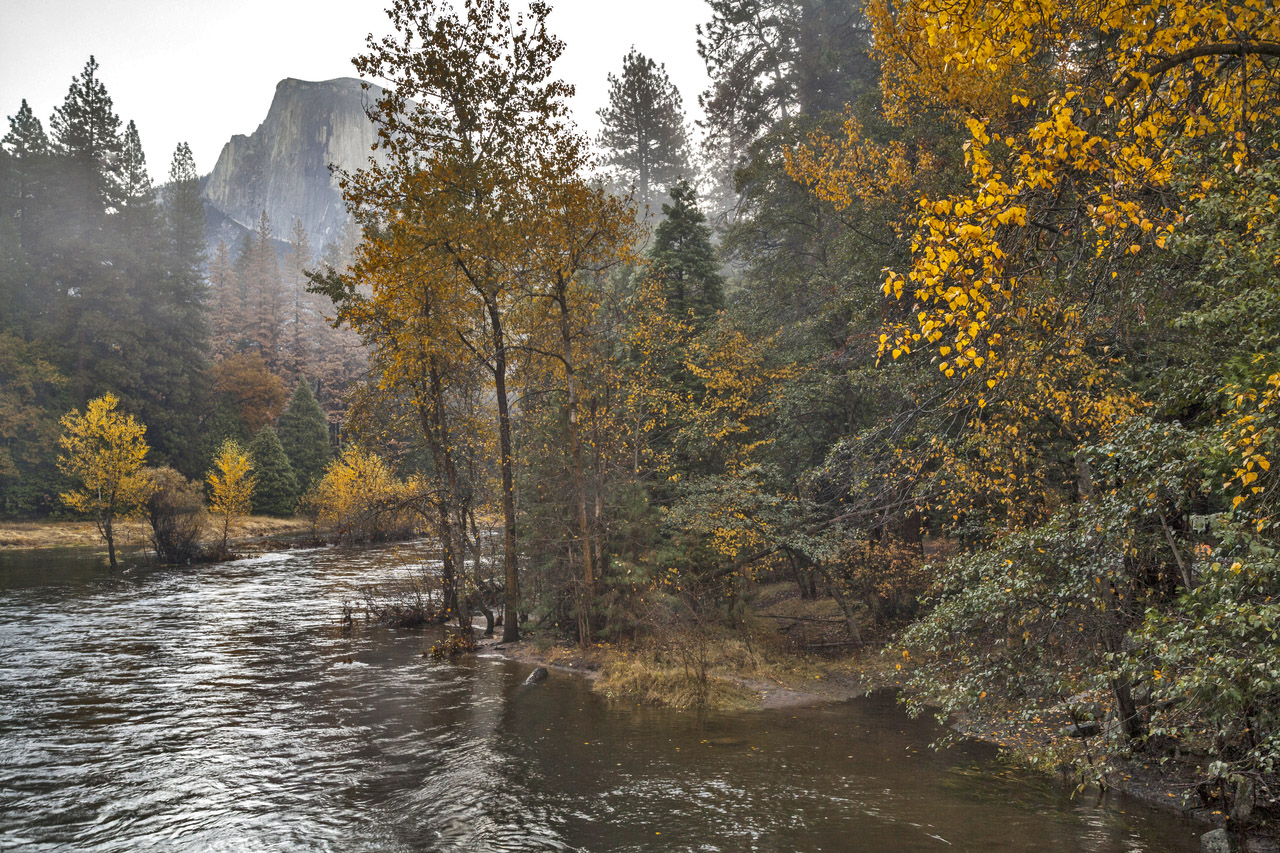 Merced River in Autumn
Merced River in Autumn
Photo by Yosemite Conservancy/Keith Walklet
West end of Yosemite Valley: In Yosemite Valley, deciduous tree leaves changing colors is magnificent. It is hard to beat when the broad leaf maples start turning yellow, the dogwoods turn their gorgeous shades of pink and oaks turn a gold color. The Merced River gets this still sort of blackish water coolness. The west end of Yosemite Valley is one of the more lovely areas to be in enjoy the change in color.
Mirror Lake and Snow Creek
This trail is fun year-round. Mirror Lake sits below Half Dome in the east end of the Valley. Go past Mirror Lake to a trail called Snow Creek that ends up on the north rim of the Valley and you could actually take it all the way to Tuolomne Meadows. But if you just go up that trail 10 switchbacks, it's not very far to get the most spectacular view of Half Dome, see clouds, and lookup this huge canyon that's draining down from Tenaya Lake down into the Valley. Some people are intimidated by those deeper trails like the Yosemite Falls Trail or the Four Mile Trail or Snow Creek Trail because they think it’s steep and long. But, just to go a dozen switchbacks on these trails, you will get such a cool view, and then just turn around.
Yosemite Falls Trail and Four Mile Trail
The same thing for Yosemite Falls Trail and the Four Mile Trail, which are in the central part of Yosemite Valley. Fall is a more prime time for hiking the Valley than summer because it's cooler. Think about what direction your trail is on. Yosemite Falls Trail is the south facing trail, which will be hotter than the Four Mile Trail which is a north facing trail. The Valley itself runs east and west.
Mariposa Grove of Giant Sequoias
Fall is also about giant sequoia groves. There is a gorgeous deciduous understory in the grove with amazing colors. Azalea and other shrubs add a really neat layer of color to those groves and these giants sequoia groves are really precious they only exist on the western slope of the Sierra Nevada in a very distinct elevation range. There are not that many of them, so going to appreciate these ancient trees, a relic from a much wetter cooler time in the Sierra Nevada.
Typically, peak colors are late September, to the middle of October for the valley and the sequoia groves.
Winter, the secret season
Winter is Adonnia’s favorite season in Yosemite.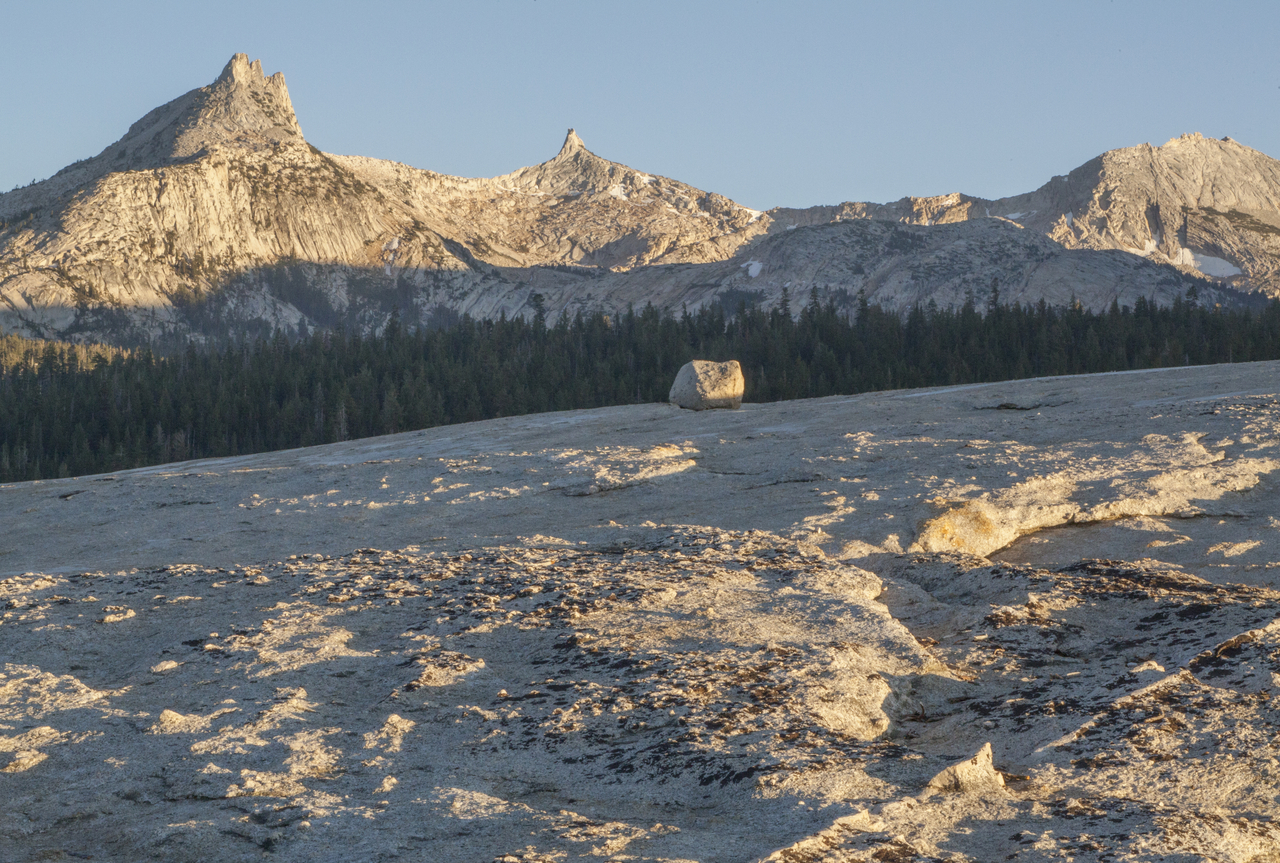 Pothole Dome Beauty
Pothole Dome Beauty
Photo by Yosemite Conservancy/Keith Walklet
Badger Pass Ski Area: You can rent cross-country skis, downhill skis or snowboard. It is a little ski resort that even families who have never skied before can have an unintimidating experience. They groom the Glacier Point Road and you can ski on it in the winter. Most people aren't going to get that far on it out to where the really spectacular views are, but it makes for a really nice winter recreation zone.
Yosemite Valley, which is at 4000 feet is breathtaking when snow covers the cliffs. Some of Ansel Adams’ most famous photographs were taken in the winter because of the contrast that gets created by the snow hitting all those ledges on the cliffs.
Yosemite Conservancy has been a partner for education enrichment for visitors with the National Park Service since 1923. A big part of our mission is helping people understand this place and our guides and naturalist are really the best in their field. They are people who've spent a lifetime studying the natural and cultural history of this place and how to best share it with visitors.
Yosemite Conservancy Programs
Outdoor Adventures: There are outdoor adventures which are scheduled programs that you can find on the website yosemiteconservancy.org. Some topics include geology, backpacking Half Dome, wildflowers, birding, and basketry. You can take courses in both the front and backcountry trips. The goal of the Outdoor and Custom Adventure Programs is to help people feel connected. Registration opens in December for the ones that are on scheduled. There are also many drop in programs and bird and plant walks. You will find them listed on the Yosemite Conservancy website as well as the Activity Guide newspaper you receive at the gate.
Custom Adventure Program
Customer Adventure Programs, where you hire a guide who is going to meet you at the times you want and take you where you want to go as well as places you didn't even know you wanted to go. Having that insider local knowledge is going to enhance your trip. It is recommended that if you're going to hire a guide, hire them on the first day because you're going to get the most out of it. Because you'll travel with them for the day and not only will you get a great overview of the park and understanding, but you can then ask questions and to help plan the rest of your trip. A guide can help you understand geographically the lay of the land and how to arrange the places you want to see in the right order so that you're being really efficient about your drives. It's fun to have a guide who's going to help the kids stay engaged and interested in where they are and help you get a better understanding of this place. There are so many layers of both the human and natural history that as you learn them, the place becomes more alive.
It is possible to book Custom Adventures within 48 hours, but it is recommended that people getting in touch at least two weeks or a month in advance of their trip to get the timeframe that works for your trip. Custom Adventures are approximately $500 a day. By calling the Conservancy office to talk about booking a custom adventure you get insight into a good itinerary.
Custom Backpacking Trips takes care of the process of getting a wilderness permit and figuring out a backpacking itinerary and provide a guide. Especially for people who haven't done before, it can be daunting. Also check out scheduled backpacking programs through outdoor adventures all over the high country. Visitors need to bring their own gear and food but the rest is all handled.
Yosemite Theater runs April through October, five to six nights per week on a variety of topics, in an airconditioned and comfortable environment. So at the end of a long hiking day enjoying Yosemite Theater performances can really add in that layer of interpretive understanding.
Show topics include:- John Muir storytelling about Yosemite in the 1850s
- Yosemite search and rescue, which is a must see to understand not only defying feats that go into helping people who've been injured in this park, but also preventative search and rescue and how to keep your family safe while here
- Shelton Johnson does this Buffalo Soldiers performance
- Rock climbing
Programs include:- Artist-lead programs that are for four hours most days of the week in a variety of mediums.
- Children's programming out there.
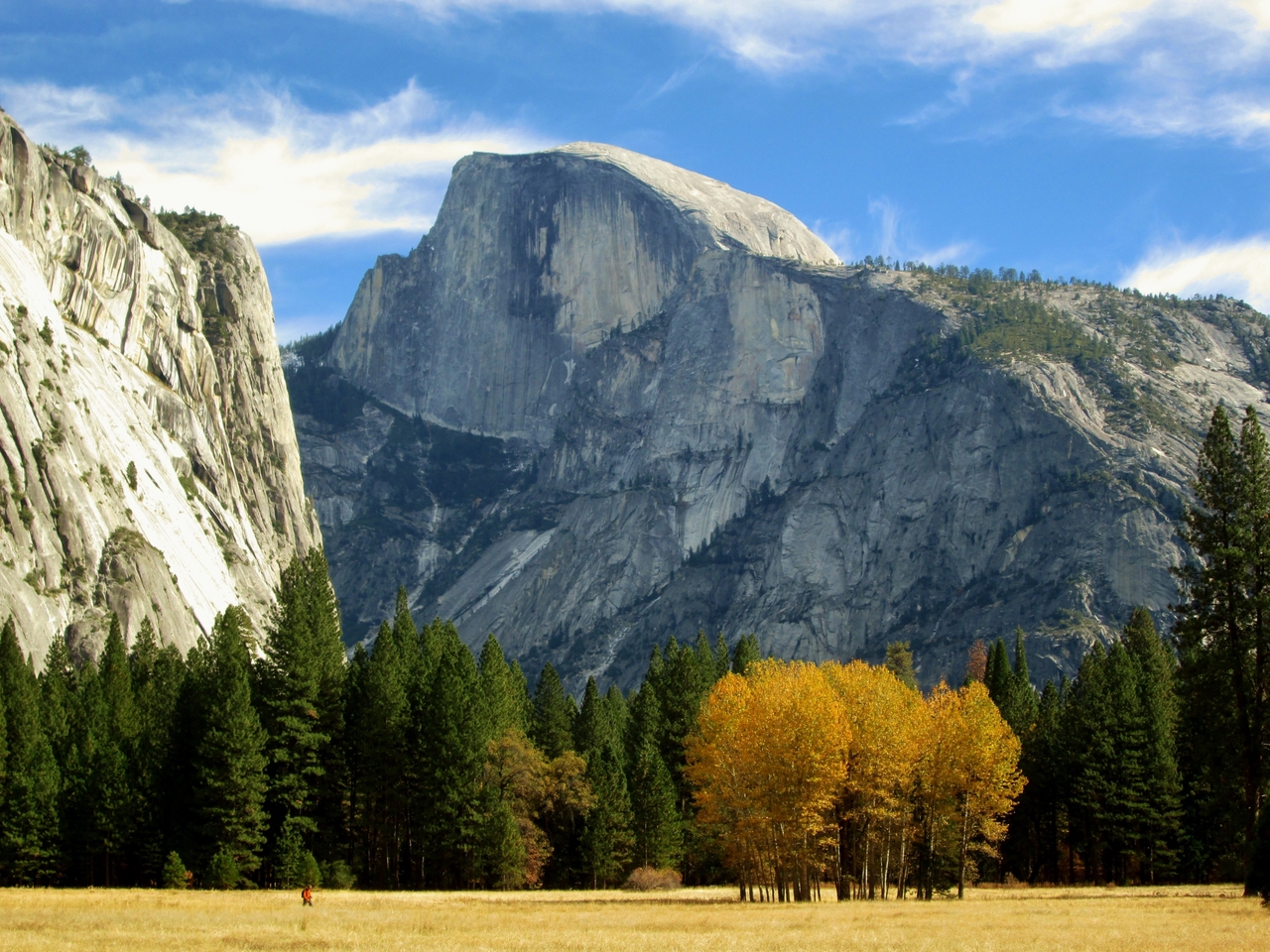 Half Dome in Autumn – photo by Pixabay
Half Dome in Autumn – photo by Pixabay Accommodations inside the Park through Yosemite Hospitality
- Curry Village - canvas tents.
- Housekeeping Camp - similar to camping except you don't need to pitch a tent. There's an actual structure there already for you and you can still have a campfire. There is a store on site and a laundromat. You're right along the Merced River. There are great views of Half Dome along the housekeeping camp beach area.
- Wawona Hotel near the south entrance, which is a National Historic Landmark.
- Ahwahnee Hotel, considered the crown jewel of national park lodges and a National Historic Landmark.
- Yosemite Valley Lodge
- White Wolf Lodge and The Tuolumne Meadows Lodge (Summer)
- Glacier Point Ski Hut (Winter)
- Five High Sierra camps that are off the Tuolumne Meadows corridor. And it has a road that's a really interesting mix of overnight experiences too.
Note: Campgrounds include traditional tent campsites, RV sites, and wilderness camping, and are all managed by the National Park Service.
High Sierra Camps date back to 1919. There is a lottery for the High Sierra Camps because the beds are limited and some of the camps have more beds than other camps. When you get to the High Sierra Camps, the canvas tent cabins are similar to what you see at Curry Village, but they are multi-units with twin beds. You get a bed, not a whole tent cabin. There's a wood burning stove and the tent. There is a family-style group dinner and breakfast offering an opportunity to talk to the other hikers. You can travel a lot lighter with a pack with some clothing and some essentials for you versus traditional backpacking, where you need to bring cooking supplies that weigh you down. They are very popular and in beautiful settings.
High Sierra Camps
- Tip: There is an opportunity at the end of the lottery season and early spring that Yosemite Hospitality will open up remaining camp availability, which is typically for one or two nights at a certain camp. Especially if you're a local near Yosemite, it's easier for you to go over numerous seasons and do a few camps at a time.
Activities offered by Yosemite Hospitality- Yosemite Mountaineering School
- Bike Rental open spring through early fall located at Curry Village and Yosemite Valley Lodge.
- Rafting at Curry village. It’s a gentle 3 mile float down the river starting at the Stillman Bridge. A shuttle takes you back. It is typically open July and August. You can just show up, but if you're staying for multiple days you can reserve for the following day, but they do not take advanced reservations. Its first come first serve with park visitors and there is a limited raft capacity - 100 rafts may be rented each day.
- Tram and Motor Coach tours of Yosemite Valley, Glacier Point Tour, and a Grand Tour, which includes Mariposa Grove of Giant Sequoias.
- Interpretive programs - naturalist walks, starry night skies program, historic hotel tour of the Ahwahnee, and children’s programs.
Yosemite in Winter
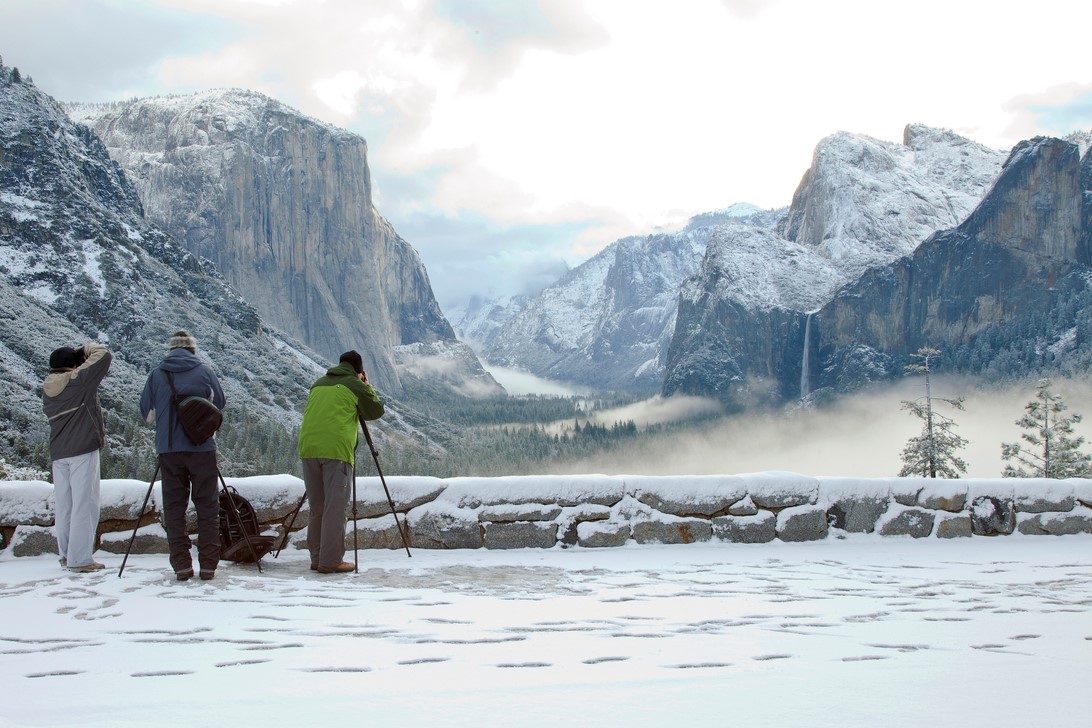 Tunnel View Winter Photographers
Tunnel View Winter Photographers
Photo by Yosemite Conservancy/Nancy Robbins
Winter is the least busy season in Yosemite. It offers a sense of solitude and a unique experience. The two primary hotels are opened year-around: The Awahanee and Yosemite Valley Lodge and then Curry Village stays open during the weekends and around the holidays.
- Tip: You'll find better rates in the winter. If you're looking for a more budget friendly Yosemite experience, winter is a good time to visit.
Ice Skating
Ice skating is actually is a historic activity in Yosemite starting in 1928 with the Yosemite Winter Club. They flooded a parking lot at Curry Village. Now there is a seasonal ice rink that’s put up in the mid-November and then taken down in early March from a parking area adjacent to the registration for Curry Village and commands a spectacular view of Half Dome.
Badger Pass Ski Area for Winter Sports
It opened in the 1930s and is the oldest ski area in California. It's great for families and for people who want to learn how to ski and snowboard with great lesson programs and affordable lift tickets. It also has world class cross-country skiing. From the Badger Pass area, you can go all the way out to Glacier Point and spend the night at the Ski Hut. There are many different trails that are groomed for cross-country skiing and back-country skiing. Snow tubing, snowshoeing, and ski tours are also available.
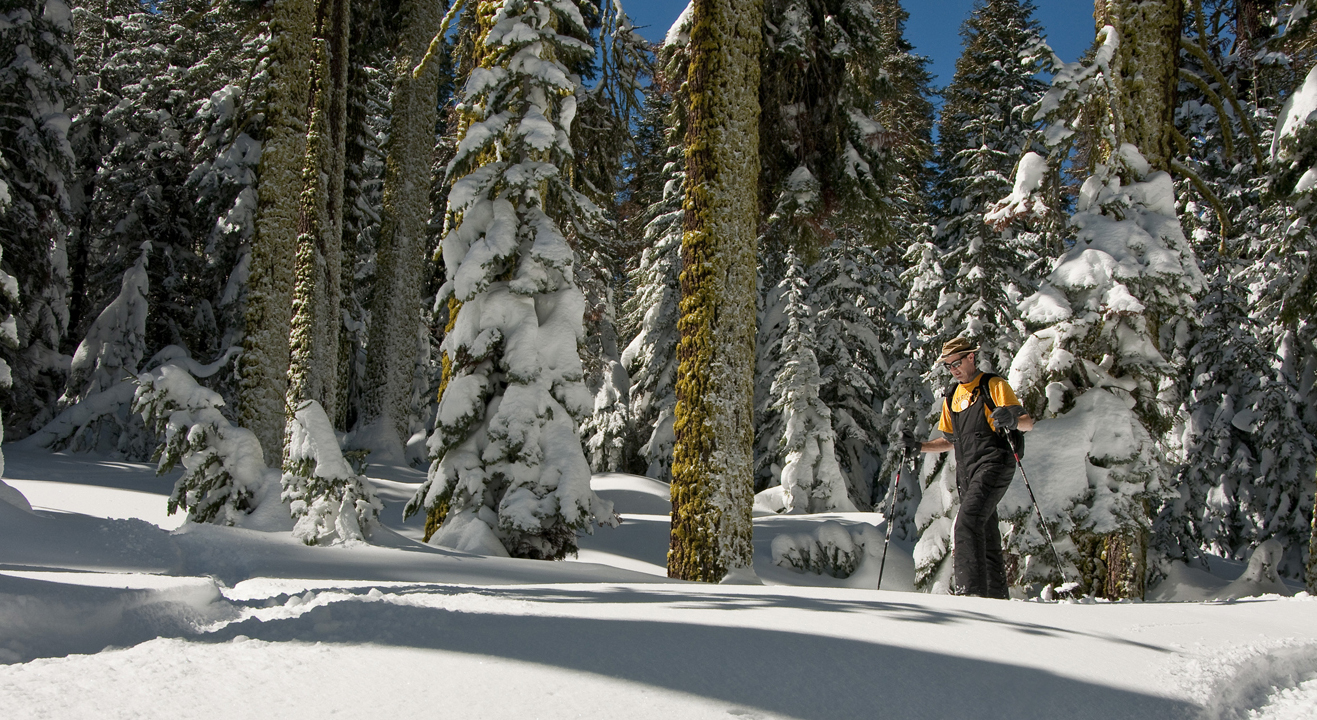 Badger Pass Snowshoer
Badger Pass Snowshoer
Photo by Yosemite Conservancy/Nancy Robbins
Specialty Events
Food and wine events at the Ahwahnee include the Vintners’ Holidays wine tasting program and 5-course dinner with California’s most renowned vintners. There is the Chefs’ Holidays where we bring chefs from around the country do cooking demonstrations and then you enjoy their wonderful food. Finally, a unique event called the Bracebridge Dinner at Yosemite. It's a historic event in Yosemite that started when the Ahwahnee hotel opened in 1927 with a Christmas Pageant dinner, beautiful singing and an elaborate show from another era.
Glacier Point Ski Hut
The gift shop at Glacier Point closes in the fall and transitions to the ski hut with dormitory style accommodations with a campfire stove and a housekeeper that manages it. They serve you breakfast and dinner. it's a similar vibe to what you would experience at the High Sierra camps, but in winter and focused on cross-country skiing. “There's nothing like waking up at Glacier Point in winter watching the sunrise. It's stunning. It's peaceful. And you get a view that is just spectacular.”
3:25 - Adonia Ripple of Yosemite Conservancy describes her background
Discussed in this episode:
5:07 - About Yosemite Conservancy
9:21 - Description of Yosemite National Park and the different regions of the park
12:13 - Hetch Hetchy
12:55 - Tom Bopp interview and Ken Burns Interview
13:29 - How long to visit and how to avoid crowds
16:51 - Spring itinerary
23:09 - Summer itinerary
28:05 - Fall itinerary
32:53 - Winter itinerary
35:03 - Yosemite Conservancy Programs
43:06 - Yosemite Conservancy Bookstores
45:22 - Climbing Cathedral Peak and the wisdom of this timeless environment
47:38 - Lisa Cesaro talks about Yosemite Hospitality
48:13 - Yosemite Hospitality accommodations
51:22 - High Sierra Camps
55:12 - Yosemite Hospitality Activities
1:00:15 - Yosemite in winter
1:03:52 - Glacier Point Ski Hut
1:05:12 - Lisa shares how special it is to live in Yosemite year-round
.jpg) Lisa Cesaro, Yosemite Hospitality
Lisa Cesaro, Yosemite Hospitality
player
Podcasts
